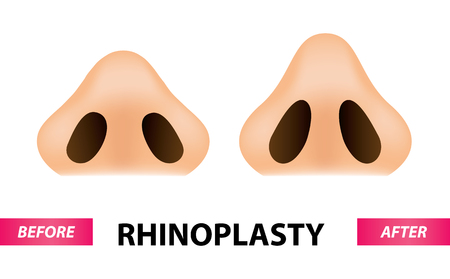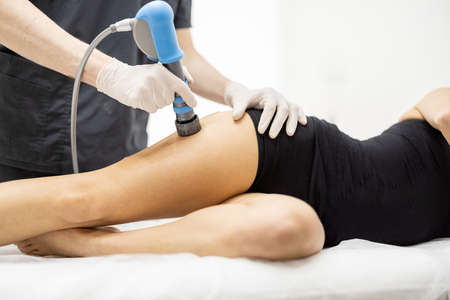Introduction to Non-Surgical Body Sculpting in the UK
In recent years, non-surgical body sculpting has taken the UK by storm, captivating those of us eager for subtle enhancements without the commitment of traditional cosmetic surgery. There’s something inherently appealing about treatments that don’t require going under the knife – a sentiment that resonates strongly with Brits who value both discretion and convenience. The growing popularity of non-invasive procedures reflects a broader cultural shift towards natural beauty, self-care, and smart wellness choices. Rather than dramatic transformations, more people are seeking gentle refinements that fit seamlessly into their busy lives, preferring lunch-hour touch-ups over lengthy recovery times. From personal experience and conversations at local salons, its clear: British clients are increasingly prioritising safety, minimal downtime, and visible results. This trend is particularly evident in bustling cities like London and Manchester, where time is precious and looking your best is always in fashion. As we embrace these innovative options, it’s easy to see why non-surgical solutions—like cryolipolysis—are shaping the future of body contouring across the UK.
Understanding Cryolipolysis: The Science and Experience
Cryolipolysis, often referred to as “fat freezing”, has rapidly become a buzzword across the UK’s beauty and wellness industry. But what exactly happens during this procedure, and why is it capturing the imagination of so many Britons? At its core, cryolipolysis is a non-invasive technique designed to target and eliminate stubborn fat cells by exposing them to controlled cooling. This process takes advantage of the fact that fat cells are more susceptible to cold temperatures than surrounding tissues—once frozen, these fat cells gradually break down and are naturally processed by the body over several weeks.
The Science Behind Fat Freezing
When I first encountered cryolipolysis, I was both intrigued and slightly sceptical. The idea that you could simply “freeze away” problem areas without surgery sounded almost too good to be true. However, after delving deeper into the science, I realised just how clever this approach is. The treatment uses a specialised device that gently suctions your chosen area—be it love handles or thighs—then cools it to a precise temperature for about 35-60 minutes. Unlike traditional liposuction, there’s no need for anaesthesia or incisions, making recovery almost immediate.
Mechanism of Action vs Traditional Methods
| Treatment | Invasiveness | Recovery Time | Typical Results Timeline |
|---|---|---|---|
| Cryolipolysis | Non-invasive | Minimal (return to daily activities same day) | 8-12 weeks for visible results |
| Liposuction | Surgical/Invasive | 1-2 weeks downtime | Immediate with swelling; full results in months |
| Diet & Exercise Alone | Non-invasive | No downtime | Varies greatly; not targeted to specific areas |
A Personal Perspective on the Procedure
Having undergone cryolipolysis myself at a reputable London clinic, I can say the experience was surprisingly comfortable. There was an initial chill—a bit like holding an ice pack against your skin—but this sensation quickly faded as the area became numb. Throughout the session, I read a magazine and chatted with the therapist about my expectations. Afterwards, there was mild redness and numbness, but absolutely no disruption to my routine—I even popped out for coffee straight after.
The Appeal in the British Context
The understated yet effective nature of cryolipolysis resonates deeply with British sensibilities. We tend to prefer subtle transformations and value procedures that fit seamlessly into our busy schedules. In a culture where discretion is prized and “no fuss” solutions are appreciated, it’s no wonder fat freezing has gained such traction here. Moreover, with growing awareness around self-care and body confidence, more people across the UK are seeking treatments that enhance their natural silhouette without going under the knife.

3. Cultural Attitudes Towards Body Image and Aesthetics
The UK’s relationship with body image and aesthetics has always been nuanced, shaped by historical influences, media trends, and personal values. Over the past decade, there has been a noticeable shift away from rigid beauty standards towards a more inclusive approach to self-image. This evolving mindset is evident in the growing acceptance of diverse body shapes and the celebration of individuality, especially among younger generations who champion authenticity over perfection.
Against this backdrop, non-surgical treatments like cryolipolysis have found their place within the British beauty landscape. Cryolipolysis appeals to those seeking subtle enhancements without the downtime or stigma often associated with invasive procedures. It aligns with the UK’s increasingly pragmatic approach to aesthetics—where “tweakments” are favoured for their ability to deliver natural-looking results that fit seamlessly into everyday life.
There’s also a strong cultural emphasis on privacy and discretion when it comes to cosmetic treatments in the UK. Many individuals prefer solutions that allow them to enhance their appearance quietly, avoiding dramatic changes or overt signs of intervention. Cryolipolysis, with its gradual results and minimal disruption, fits perfectly into this preference for understated refinement.
Moreover, as conversations around mental health and self-acceptance become more mainstream, the narrative surrounding aesthetic procedures is shifting. Rather than pursuing unattainable ideals, many people in Britain now view body sculpting as a form of self-care—a way to boost confidence and embrace one’s best self on their own terms. Cryolipolysis supports this movement by offering a gentle, customisable option for those looking to feel more comfortable in their skin without compromising their sense of identity.
4. Cryolipolysis in British Clinics: Safety and Standards
Experiencing cryolipolysis in the UK offers a reassuring blend of scientific precision and British sensibility, thanks to the stringent regulations that clinics must adhere to. For those considering non-surgical body sculpting, understanding how safety and quality are maintained is essential. Here’s an insider perspective on what you can expect in terms of safety protocols and typical experiences when seeking cryolipolysis treatment across the UK.
Regulatory Framework
The UK takes patient safety seriously, especially with cosmetic procedures gaining popularity. Cryolipolysis treatments are regulated by several bodies, most notably the Care Quality Commission (CQC) in England, which ensures that clinics meet rigorous standards for hygiene, equipment, and staff training. Additionally, practitioners often hold certifications from recognised organisations such as Save Face or the British Association of Cosmetic Nurses (BACN), further underscoring the commitment to best practices.
| Regulatory Body | Role | Key Focus Areas |
|---|---|---|
| CQC (Care Quality Commission) | Licensing & Inspection | Hygiene, Safety Protocols, Patient Care |
| Save Face | Accreditation | Practitioner Qualifications, Clinic Standards |
| BACN (British Association of Cosmetic Nurses) | Professional Membership | Training, Ethical Practice |
The Patient Journey: What to Expect at a UK Clinic
From my own observations and conversations with practitioners, British clinics tend to emphasise a consultative approach. Your journey typically begins with a thorough consultation where your medical history is reviewed and expectations are discussed candidly—no false promises here. The quintessentially British “duty of care” shines through; if you’re not a suitable candidate, practitioners will tell you so upfront.
Safety Protocols in Place
- Pre-Treatment Consultation: Every client undergoes an assessment to identify any contraindications or risks.
- Sterile Environment: Treatment rooms are held to NHS-level standards for cleanliness.
- Trained Practitioners: Only certified personnel operate cryolipolysis devices, many of whom have medical backgrounds.
- Aftercare Guidance: You’re provided with detailed aftercare instructions to ensure optimal results and swift recovery.
The Typical Experience: British Nuance in Action
I found the atmosphere in UK clinics to be both professional and comforting—think of it as a blend between Harley Street precision and your local GP’s reassuring bedside manner. Staff take time to explain each step, answer questions without rush, and check your comfort throughout the session. The subtle focus on discretion and privacy is very much in line with British values; you can expect confidentiality to be paramount.
If you’re weighing up whether cryolipolysis is right for you, knowing these standards should put your mind at ease. The UK’s regulatory environment not only keeps treatments safe but also encourages ongoing improvements in technique and technology—so you can trust you’re quite literally in good hands.
5. Comparing Cryolipolysis with Other Body Sculpting Trends
Evaluating the Differences: Cryolipolysis vs. Other Non-Surgical Options
As non-surgical body sculpting grows in popularity across the UK, there’s a natural curiosity about how cryolipolysis measures up against other trending treatments. From my own journey—and countless chats with friends and practitioners—Ive found that each method offers unique benefits, but cryolipolysis truly carves out its own niche.
Cryolipolysis: Precision and Comfort
The standout feature of cryolipolysis, often known by the brand name CoolSculpting, is its ability to target stubborn pockets of fat with astonishing precision. Unlike radiofrequency or ultrasound-based procedures, which can sometimes feel warm or tingly, cryolipolysis works by gently cooling fat cells beneath the skin. For me, it was surprisingly comfortable—just a chilly sensation at first, followed by numbness that made the rest of the session fly by while I scrolled through my phone.
Fat Reduction Results: What Sets Cryolipolysis Apart?
One thing many Brits appreciate is visible results without downtime. After a few weeks post-treatment, I started noticing a smoother silhouette—particularly in areas that simply refused to budge despite all my gym efforts. While treatments like laser lipolysis or injections promise quick fixes, I found the gradual changes from cryolipolysis felt more natural and subtle, which fit right into the understated British aesthetic we so admire.
Complementary Treatments: Creating a Bespoke Experience
In London’s top clinics, it’s not uncommon for practitioners to recommend combining cryolipolysis with skin-tightening therapies or lymphatic massage for enhanced outcomes. My practitioner tailored my plan with this in mind, helping me address both pinchable fat and loose skin—a truly bespoke approach that reflects the personalised service expected in UK beauty culture.
Personal Reflections on Effectiveness and Suitability
Ultimately, the best treatment depends on your goals and lifestyle. Cryolipolysis became my go-to for persistent fat on my abdomen and flanks; friends of mine have seen great results pairing it with muscle-toning devices or opting for injectables when seeking more dramatic reshaping. What unites all these methods in Britain is a preference for subtlety, safety, and minimal interruption to daily life—values that make cryolipolysis especially appealing as part of our ever-evolving body sculpting trends.
6. Patient Experience and Community Feedback
The British approach to aesthetics has always leaned towards subtlety, refinement, and authenticity, and it’s no different when it comes to non-surgical body sculpting with cryolipolysis. Across the UK, personal stories echo a consistent theme: people are seeking real results without the drama of surgery or extended downtime. From urban clinics in London to boutique practices in Edinburgh, patients share experiences of returning to their routines almost immediately after treatment—a crucial factor for the busy British lifestyle.
One recurring narrative is the sense of empowerment clients feel after seeing gradual, natural-looking improvements rather than dramatic overnight changes. British clients often express satisfaction with results that allow them to look better in their favourite high-street fashion rather than aiming for extremes. The ‘less is more’ philosophy resonates deeply, and many appreciate how cryolipolysis aligns with their desire for authenticity.
Feedback from local communities also points to the importance of trust and transparency. Many clinics emphasise comprehensive consultations, ensuring clients understand what to expect. This open approach helps cultivate a sense of reassurance—something highly valued in the UK’s wellness culture.
Social media groups and local forums brim with honest reviews and before-and-after stories. It’s common to see discussions about which clinics have friendly staff or create a welcoming atmosphere; these factors matter as much as clinical outcomes in shaping overall satisfaction.
Notably, community support extends beyond individual results—many Britons are keen to share tips on maintaining a healthy lifestyle alongside their treatments, reflecting the holistic mindset gaining popularity across the country. The collective feedback highlights that while cryolipolysis is effective, it is best viewed as one piece of the broader self-care puzzle.
7. Outlook: The Future of Body Sculpting in the UK
As we look ahead, the landscape of body sculpting in the UK appears to be evolving at an unprecedented pace. Cryolipolysis has already carved out a significant space within British beauty culture, thanks to its non-invasive nature and reliable results. Yet, what truly excites me is how this trend continues to shape and be shaped by our collective desire for natural-looking, subtle enhancements that fit seamlessly into busy British lifestyles. With wellness and self-care now deeply embedded in everyday routines across cities from London to Manchester, I anticipate innovations in cryolipolysis technology—think quicker sessions, greater precision, and even more comfort during treatments.
Emerging Trends in Aesthetic Treatments
The future points towards personalisation as a driving force. Brits are increasingly seeking bespoke treatment plans tailored to their unique body types and goals. Clinics are responding with comprehensive consultations and combination therapies, blending cryolipolysis with skin-tightening or muscle-toning modalities for multi-dimensional results. This holistic approach not only enhances outcomes but also resonates with our appreciation for nuanced, authentic beauty.
The Digital Influence
Another fascinating trend is the integration of digital technology. From AI-powered body analysis tools to virtual treatment simulations, tech-savvy clinics are making it easier than ever for clients to visualise their potential transformations before committing. This sense of reassurance is particularly valuable in the UK, where trust and transparency play such pivotal roles in decision-making around cosmetic procedures.
Cryolipolysis: A Lasting Presence
While new non-surgical options will undoubtedly emerge—such as injectable fat dissolvers and advanced ultrasound devices—it’s clear that cryolipolysis will remain a cornerstone of body contouring in Britain. Its proven safety profile and minimal downtime align perfectly with our pragmatic yet discerning approach to aesthetics. As social perceptions continue to shift towards body positivity and empowerment, I believe cryolipolysis will be celebrated not as a quick fix, but as a tool for supporting confidence and self-expression on one’s own terms.
In essence, the future of body sculpting in the UK looks bright, dynamic, and beautifully individualised—much like the people who embrace these treatments themselves.


